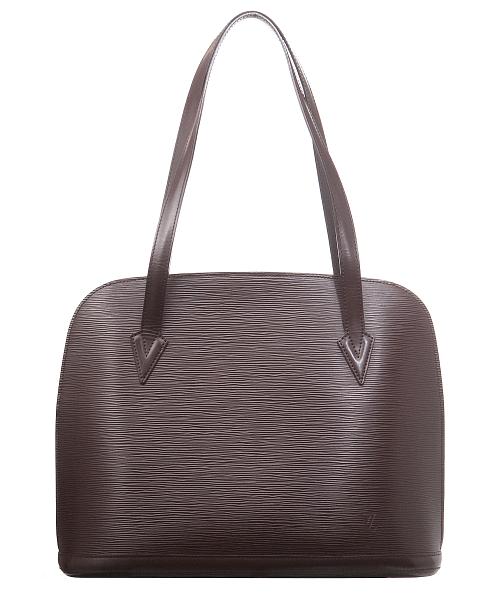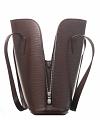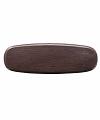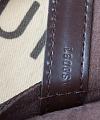Louis Vuitton Moka Epi Leather Lussac Tote Bag
Item not present in the shop
For security reasons this item is not present in our shop. We kindly request you to make an appointment one day in advance if you want to view the item.
Shipping
We don't declare under-value and as 'gift' for customs.
Custom duties and VAT in your own country may apply and the seller cannot be held responsible for additional costs. Please check with your country’s customs office to determine what these additional costs will be prior to bidding/buying.
Returns
If the customer decides to cancel / withdraw he will bear the risk, cost of all shipping and return import duties of the seller. The item will be packed very well and will be shipped insured. Money will be returned on arrival of the parcel, after been checked.
A chic and sophisticated Louis Vuitton bag to carry all your daily essentials. This Louis Vuitton Lussac Tote Bag in brown epi leather features a roomy interior with a double zip opening for easy acces. A perfectly elegant everyday carryall.
- AS0091
- Double zip closure, wraparound
- Double flat leather handles
- Handle Drop: 10"
- Silvertoned hardware
- Brown microfibre lining
- One zip pocket and one large flat pocket
- Interior D-ring
- Embossed LV initial on front of bag
- Measurements: 15" L x 5" W x 12" H
- Includes dustbag
- Retail price: 1.140,-$
- Condition: the exterior Epi leater is clean and beautiful, there is very light scuffing, light wear at the bottom corners but overall in excellent condition. The hardware bright and crisp. The interior is clean. This bag has been kept in excellent condition throughout the years.
- Reference
- 113-357
- Designer
- Louis Vuitton
- Status
- Sold
- Year
- 2001
- Material
- Epi leather
- Origin
- Made in France
- Dimensions
- 30 x 37 x 10 cm
Louis Vuitton
Louis Vuitton (1821-1892) started his training apprenticing with a successful box-maker and packer named Monsieur Maréchal in 1837 in Paris. At this time box-making and packing was a highly respectable and refined craft. A specialist in this area had to custom-make all boxes to fit the goods they stored and had to personally load and unload these boxes for their rich clients. In only a few years, Vuitton was well-respected by Paris’ upper class in this craft, one of his clients being Napoleon’s wife. In 1854 he opened his own shop under the name of Louis Vuitton Malletier in Paris. His modern dirt-resistant and waterproof products were of such good quality, that they were soon in high demand. In addition, unlike previous domed shaped trunks, Vuitton’s were rectangular, making them stackable and far more convenient for shipping. One of the oldest names in the business, Louis Vuitton got his start as a layetier (packer) to Napolean III’s wife, Empress Eugénie. After years of studying the foundation of voyage-friendly baggage, Vuitton decided to deconstruct the model and build his own, originally designing airtight canvas trunks with flat bottoms - as opposed to the time’s rounded styles - for stacking and easy storage.
In 1854 he opened his own shop under the name of Louis Vuitton Malletier in Paris. His modern dirt-resistant and waterproof products were of such good quality, that they were soon in high demand. In addition, unlike previous domed shaped trunks, Vuitton’s were rectangular, making them stackable and far more convenient for shipping. In 1886, son Georges Vuitton (1857-1936) invented the revolutionary locking system that is still used today. When Louis Vuitton died in 1892, Georges took over the company. It was Georges who designed and established the iconic LV monogram. Today, the popular luxury brand can be found internationally and has expanded its products to include clothing, shoes, handbags, jewelry and timepieces.
The seventies found the brand expanding into the Asian market, with new stores in Japan, China, and South Korea. The company merged with Moët et Chandon and Hennessy in 1987, creating the luxury powerhouse anagram LVMH. Amazingly, it wasn’t until ten years later that they went into the ready-to-wear business, hiring New York designer Marc Jacobs in 1997, who immediately added an incredibly lucrative clothing business while bringing Vuitton up-to-date by collaborating with such artists as Stephen Sprouse (who irreverently graffitied bags) and later Takashi Murakami (who added a bubble-gum anime humor to the line).
Today, the label encompasses ready-to-wear, watches, jewelry, home, and, of course, that want-worthy luggage.





